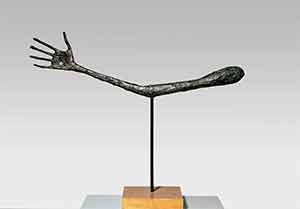How to create a positive practice environment and prevent burnout
Francesco Carelli
Professor of Family Medicine
Milan and Rome
High rates of exhaustion and depersonalization are driving many family doctors to consider leaving practice, and this choice would exacerbate doctor shortages and affect patient care.
The many rigors and stresses of medical practice mean that physicians experience burnout at higher rates than the general population. They work an average of 10 hours more per week and are nearly twice as likely to be dissatisfied with their work-life balance, according to an Archives of Internal Medicine study published online 20 August 2012.
The pressures place further stress on an already strained health care system, with more doctors choosing to retire early or shift away from clinical practice.
The very high prevalence of burnout among physicians is alarming and, according to previous studies, has potential serious implications for quality of care. Researchers surveyed 7,288 physicians in United States and found that 45.8% reported experiencing at least one symptom of serious burnout, such as emotional exhaustion, depersonalization and a low sense of personal accomplishment. Of the surveyed physicians, the study compared 6,179 practicing doctors aged 29 to 65 with 3,442 workers of the same age group in other fields. Doctors had a higher risk of emotional exhaustion (32.1% versus 23.5%) and overall burnout (37.9% versus 27.8%).
It’s a systemic problem. It’s not just that some physicians have high-risk personalities.
The statistics bear out that physicians have a suicide rate two to four times greater than general population. Some physicians have contended with increasing stress by working fewer hours or retiring early. This does not bode well for the needs of a good nation.
Everywhere there is an increasing number of calls from hospitals and physicians struggling with burnout-related issues, such as drug and alcohol addiction.
Burnout rates are highest among family physicians, internists and emergency physicians. The doctor-patient relationship is still the most meaningful aspect in medicine, but doctors can lose sight of that. Many doctors feel overwhelmed; they often are called on to make life-or-death decisions and are inundated constantly with new information, new studies and new regulatory requirements. On top of that, they may worry about being used by a patient or cited by a medical licensing board or now increasingly by Courts.
A lot of times they are held to a standard of perfection, and if made a mistake, there is a punitive consequence to that.
Physicians have faced increasing administrative burdens over the last 20 years, such as insurance companies requiring prior authorization for near all procedures and prescriptions.
Denial of payment for services rendered was a more rare situation before the 1990s compared to today. Insurance entities did not intrude as deeply into a physician’s practice. In today’s climate, physicians must not only deliver competent clinical care but also spend time justifying their medical recommendations to third-party payers.
There are significant differences in burnout by specialty. Some of the highest rates are among physicians serving on the “front lines” in family medicine, general internal medicine and emergency medicine.
Emergency physicians work long hours and spend a lot of holidays, nights and weekends away from their families. As the safety net for people without regular primary care, emergency physicians are seeing more and more patients and must balance those demands with limited resources and increasing pressures to cut costs.
A major challenge for primary care physicians is that the current payment system doesn’t reward preventive care, such as phone counseling to help patients manage chronic diseases. The burdens are worsening as physicians must contend with the costs and hassles of implementing new quality reporting standards and electronic health records.
This is one of the reasons many physicians are becoming under-employed and can’t sustain their practices.
Loss of autonomy is another challenge, especially as more doctors become under-employed and cope with having their decisions constantly questioned.
One of the things that frustrates physicians is a sense of powerlessness. People are working hard, they’re working long hours and they’re working faster, so they are not able to provide the kind of attentive care that they would like.
The higher rates of burnout among primary care physicians are particularly concerning, given that they are key to many of the elements of health system reform and many primary care physicians are already functioning at their limit.
High burnout rates are driving many physicians to move away from clinical practice and could deter some from entering the profession. It also means that fewer medical students are choosing primary care.
The system just chews up and it’s sad to see other doctors who are so stressed that they’ve walked away from medicine.
Many doctors are considering changing careers or retiring early, looking down the road to when they will get out of medicine and leave without anyone to see the patients.
Burnout among doctors has reached a critical level, and international studies hope their findings will help motivate systemic changes, just to sound an alarm that this is a big crisis situation.
There’s a pressing need for research to identify what organizational changes can best help to reduce burnout. Any solution needs to be a combination of assisting individual physicians and working to solve the root causes of burnout in the profession. Often, physicians who struggle with burnout self-medicate: they may take sleeping pills to cure insomnia or narcotics for headaches and, because of the high expectations of the profession, some doctors may wait years to seek help.
They tend to be isolated, think to be in control and not to show weakness, so it’s hard to ask for help.
Finding solutions to broader systemic issues is difficult. Most people agree that the health system needs to be changed, but reaching consensus on what those changes should be is challenging.
Some changes already under way will have a positive impact, such as the expansion of the medical home model of care that emphasizes team-based care. There is also need to put more emphasis on primary and preventive care and greater efforts to reduce physician shortages.
The medical profession needs to do more to reinforce work-life balance concepts early in the training of medical students and residents, and educate practicing physicians about stress management.
As demands build and many doctors report burnout, it’s critical that physicians use humor and other tools to promote wellness in their practices.
Using humor with patients strengthens the physician-patient relationship and makes physicians more approachable. And it can relieve patients’ anxiety about the medical visit.
Just as important, incorporating humor can rejuvenate physicians who experience burnout due to the challenges of their job. Humor relieves some of the pressure on physicians. At a time such this, it’s critical that physicians use humor and other tools to create a positive environment in their practice.
Physicians and mental health experts can offer doctors guidance on how to weave humor into their day and how to maintain a positive attitude through effective ways to manage work-related stress and steps physicians should take to ensure their own well-being.
Contributing to the high rate of burnout among doctors are increasing administrative demands, long work hours and concerns about medical liability lawsuits. That discontent can negatively impact the environment in physicians’ practices and hinder patient care.
In a leadership role, everything that goes on with doctors influences the health of their practice. If they are experiencing burnout or feeling depressed, there is no way they can disguise that completely.
Such dissatisfaction can make it difficult for doctors to pick up on patients’ subtle cues, such as body language and tone, that can offer insight into medical problems or health concerns the patient might not feel comfortable bringing up during the visit.
Patients also can sense when a doctor is in a bad mood, and that can make them reluctant to share important health information.
In those situations, patients feel like they are being treated more like problems than people and there is nothing healing about that at all.
The key to achieving a positive attitude, even during the most stressful times, is starting the day by thinking about someone or something you are grateful for.
One has a choice at that moment to steer own thoughts and emotions in the direction you want them to go, choosing to seize the day or you can let the day seize you.
People who reflect on things they are grateful for feel better about their lives, are more optimistic about the upcoming week and report fewer physical complaints than those who focus on hassles or events that poorly affected them.
Physicians are recommended to take a few moments throughout the day to think about the good things in their lives because doing so can help them put the challenges they face in perspective. The worst day as a physician is better than the best day of some of patients.
Incorporating humor in interactions with patients and colleagues it helps on lightening the mood and build stronger relationships. Humor does not have to involve telling jokes or being sill, but often making a funny comment based on an observation.
That type of humor lightens the mood, and then we can dive in and start talking about things that matter. Patients are more willing to talk openly when they have that human connection.
Laughter enhances a person’s intake of air, which stimulates the heart, lungs and muscles, and increases endorphins released by the brain, resulting often to reduced feelings of stress.
More research is needed before broad claims can be made about humor’s impact on health outcomes, some medical experts caution.
A common mistake physicians make is becoming so consumed with caring for patients and staff that they neglect their own physical, mental and emotional wellness. Self-neglect impacts not just the individual doctor, but also his or her patients and the office environment.
For example, burnout in physicians has been linked to poorer quality of care, increased medical errors and decreased ability to express empathy. Personal consequences of burnout include stress-related health conditions, substance abuse and marital problems.
One component to boosting wellness is pausing during natural lulls in the day and thinking about what is going well and what isn’t. Those moments improve self-awareness, which could help physicians identify, for example, when their negative mood needs to be made more positive. Stepping back to examine the day also can help doctors think of constructive ways to handle conflict.
Physicians have to be encouraged to slow down when they eat, consume more nutrient-rich foods and be more physically active. Each of those simple behaviors not only improves physical health but also can boost happiness. The natural elevation in mood and health that is associated with physical activity has been known for a long time and it’s the cheapest, best medicine.
Physicians should consider standing while doing administrative work to increase their energy and view their office duties as another important aspect of their job rather than begrudge them.
The mindset of just getting the work done is a survivalist mode of thinking; by embracing the work, it mentally becomes easier to get through some of the chores and mundane aspects of practice that don’t deal with the doctor-patient relationship.
10 tips to help doctors find happiness
With demands on physicians increasing and burnout on the rise, suggestions have to be offered on how doctors can lead happier, more fulfilling lives.
- Pause before reacting to something that bothers you and think about how you could respond to the situation.
- Develop meaningful connections formed at your job with colleagues and staff.
- Plan personal and family time and place it on your patient care schedule to help maintain a work-life balance.
- Learn to say “no” once in a while to requests for your time.
- Focus on what is working in your life rather than fixating on what’s not working.
- Laugh with your staff and patients.
- Spend time doing things that you’re passionate about outside medicine, such as creative writing, photography or playing an instrument and so on.
- Volunteer with an organization that cares for those who are less fortunate.
- Stop feeling responsible for patients’ chronic health outcomes. Instead, view yourself as a coach who helps patients improve their health.
- Ask staff to pick up some of your administrative work so you can spend more time with patients




